Notes: Originally called Bonnyrigg when it opened with the line on 15 April 1867, the station was renamed Broomieknowe on 1 August 1868. During the First World War the railways of Britain came under control of the government's Railways Operating Department, who had the power to order wartime economy measures. Owing to a shortage of manpower, one of these measures was the closure of many smaller stations. Broomieknowe was one of these, losing its passenger service from 1 January 1917. Unlike some stations the closure was only temporary, and the station reopened on 1 April 1919.
Broomieknowe had a single platform on the down side of the line. The platform was in a deep cutting to the east of the High Street, from which it was accessed by a ramp. The main station building was of brick construction with a glazed timber frontage housing the booking office and waiting rooms. The building was rectangular in shape with a hipped slate roof and a narrow canopy around three sides. A smaller brick building alongside was the gents’ toilet. The name of the station was laid out in stones on the side of the cutting at the back of the platform.
Broomieknowe had no goods facilities and closed completely from 10 September 1951. The buildings lingered through the 1950s but had been demolished by 1962. The line through the station remained open for goods traffic until 19 May 1964.
After closure the platform survived for many years but eventually the cutting was filled in. However the cutting can still be found east of the Bonnyrigg Health Centre and west of High Street.
Click here for an extract from the autobiography of John Shanks, porter/clerk at Broomieknowe station 1943 - 1945.
BRIEF HISORY OF THE ESK VALLEY RAILWAY (More detailed history being prepared)
Lying on the banks of the North Esk River in Midlothian, the small village of Polton is situated in a deep gorge a mile south-east of Loanhead and a mile south-west of Bonnyrigg. During the 19th and 20th centuries Polton was associated with two large paper mills (Springfield Mill opened in 1742 and Polton Mill in 1850) and Mavisbank House lies nearby; it was once one of Scotland's finest buildings. It was designed by William Adam for Sir John Clerk as a summer residence and at a convenient travelling distance from Edinburgh while he was working there. From the late 19th century until 1951 it was used as a hospital for the mentally ill, but later, back in private ownership, it was gutted by fire in 1973 and is now a ruin. Author and poet Thomas De Quincey died at a cottage in the village in 1859.
The Peebles Railway opened on 1 February 1864, and it quickly became profitable, prompting a number of local schemes in and around the North Esk valley over the next two decades.
One of first was the Esk Valley Railway whose promoters wanted to build a short branch from the Peebles Railway to serve the paper mills along the North Esk Valley
 |
Discussions with the NBR started in January 1863. The EVR’s proposed route involved using Peebles Railway land and building a separate track parallel with the Peebles Railway for just over half a mile from the junction with the Edinburgh & Hawick line at Hardengreen. After diverging from the PR the line would continue eastwards through the northern part of |
Bonnyrigg to a terminus at Polton: a total length of just over two miles.
The EVR was strongly supported by the NBR who planned to lease and operate the line once it opened. There was, however, opposition to the scheme from the Caledonian Railway who had their own plans for new lines to the south of Edinburgh
The local company won through, obtaining its Act on 21 July 1863. Construction started on 5 September 1864, and arrangements for working the line were agreed with the NBR on 28 September. Initial progress was slow due to engineering difficulties and further ongoing opposition from the Caledonian Railway.
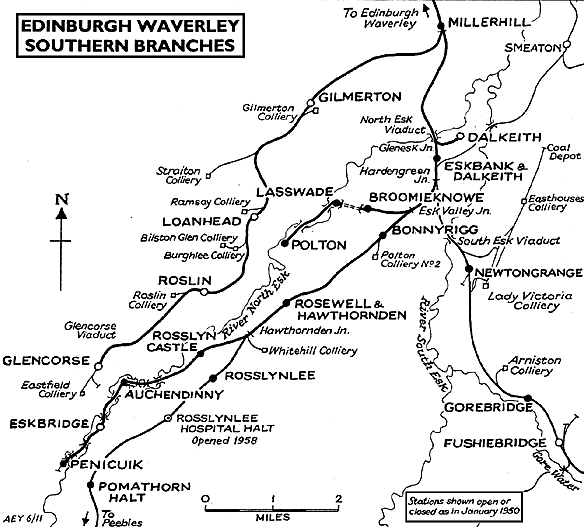 |
Although the single-track branch was only just over two miles in length it was heavily engineered for much of its route through the narrow North Esk valley. Major structures included the 430 yd Broomieknowe tunnel just east of Lasswade station and, beyond the station, a high six-arch stone curved viaduct taking the line obliquely across the North Esk valley. After this the line dropped sharply down the hillside before crossing back over the river by a much lower two-span girder bridge to reach the cramped terminus at Polton after a further half mile. Although only a mile from the town of Loanhead, Polton was hidden deep in the valley and could be reached only by steep and narrow minor roads.
The North British Railway (Lasswade and Branches) Act 1865 gave the NBR powers to construct a line from the unfinished EVR at Lasswade swinging north and west of Loanhead to Penicuik. This line was also planned to join the Edinburgh & Glasgow Railway to give access to the west. The powers were never taken up, although a branch to Penicuik from the Peebles |
 |
Railway did eventually open in 1872.
The Esk Valley Railway finally opened on 16 April 1867 with one intermediate station at Bonnyrigg. As both the EVR and the PR had their own tracks between the north-facing Esk Valley Junction and Harden Green Junction the two companies came to an agreement to share the two lines operating both as a section of double-track line.
totty.gif) |
There were issues over station names. Before the branch opened, the NBR wanted to call the first station Bonnyrigg as it was closer to the town centre than Bonnyrigg station on the Peebles Railway. The PR were reluctant to change the name of their station despite protests from the NBR, claiming that a name change would confuse passengers. The PR were eventually persuaded to reconsider, and the PR station became Bonnyrigg Road in December 1866. As predicted by the PR passengers were confused, and the EVR station was renamed Broomieknowe on 1 August 1868. After pressure from the NBR a second intermediate station was opened at Lasswade just under half-a-mile west of Broomieknowe on 12 October 1868. After operating the line from the start the North British absorbed the Esk Valley Railway on 13 July 1871.
 |
In 1887 there were six daily trains in each direction between Edinburgh Waverley and Polton. There was, however, no early morning train: the first departure from Edinburgh was at 9.25am with a journey time between Eskbank and Polton of 12 minutes. There was no Sunday service. By 1922 there was one additional service leaving Edinburgh at 7.00am |
By 1950 there were still six trains in each direction, but by this time they carried very few passengers, and the line closed to passengers on 10 September 1951. It remained open for goods traffic until 18 May 1964 following the run down of the mills. Springfield Mill finally closed in the late 1960s.
The course of the Esk Valley Railway is traceable for much of its length although no part of it has been designated as a public footpath. The tunnel at Lasswade has been bricked up (with a locked door) at both ends although both portals are fairly easily accessible. Lasswade Viaduct is Grade B listed and is not accessible.
Ticket from Michael Stewart, Bradshaw from Chris Totty , route map drawn by Alan Young.
Sources:
To see other stations on the Esk Valley Railway click on the station name:
Lasswade & Polton |

old1.jpg)

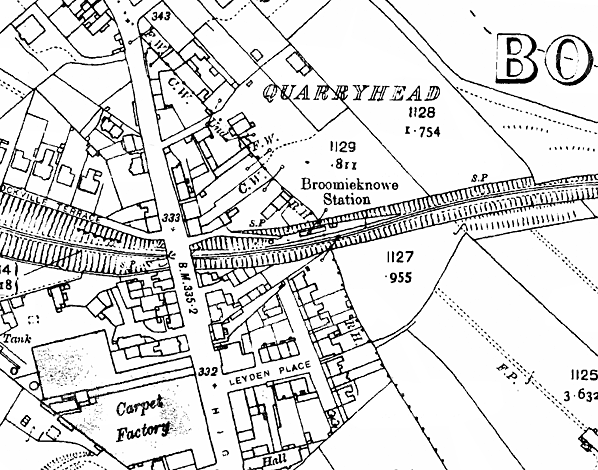
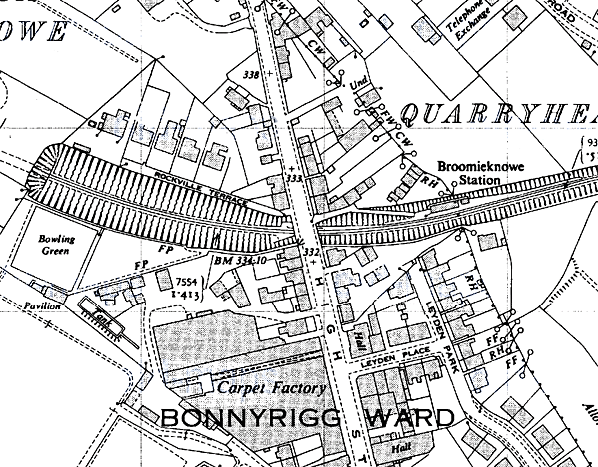 1948 1:2,500 OS map.
1948 1:2,500 OS map.old3.jpg)
old4.jpg)
old2.jpg)
1.jpg)
3.jpg)
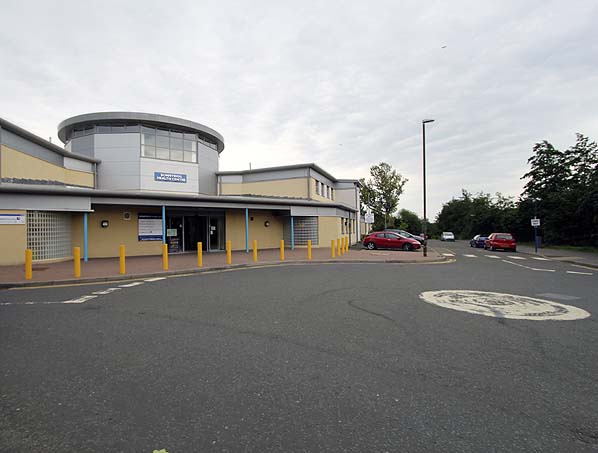
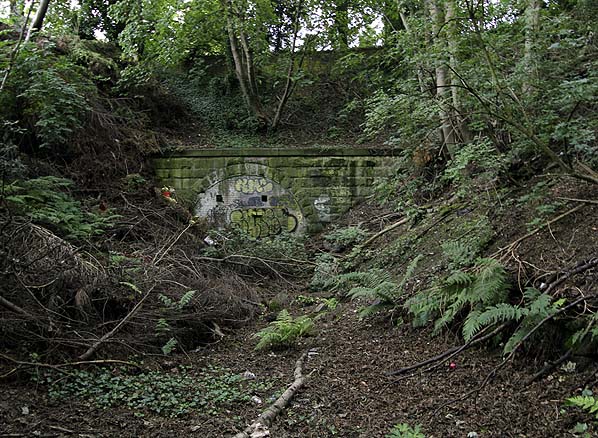



totty.gif)

thumb2.jpg)
thumb4.jpg)
 Home Page
Home Page